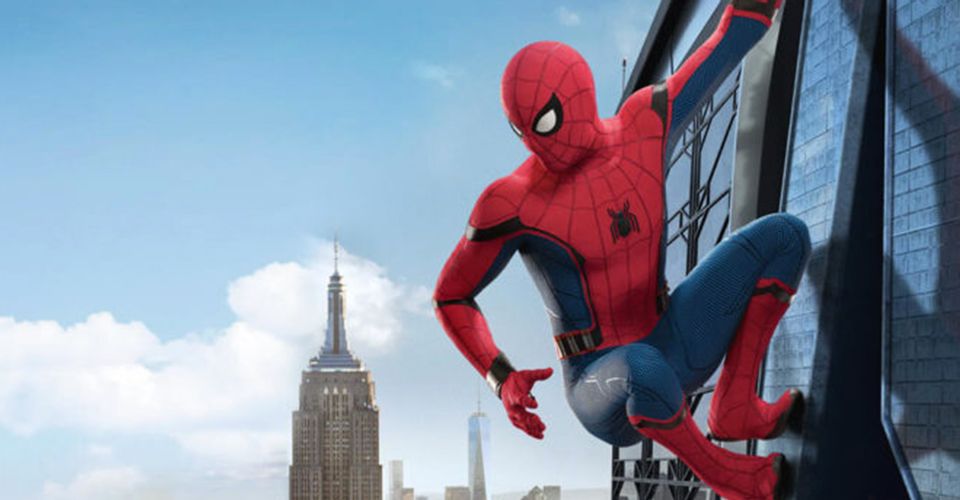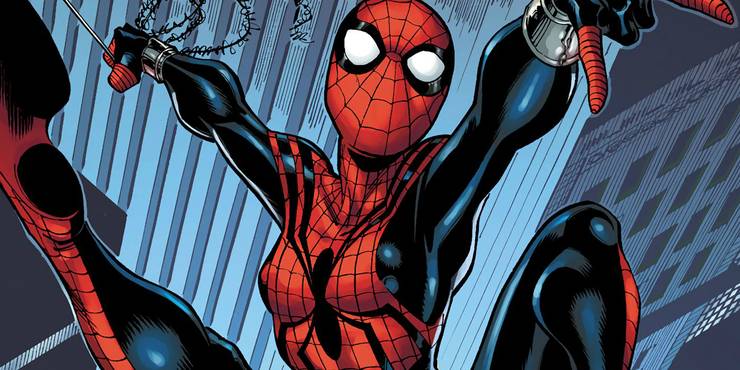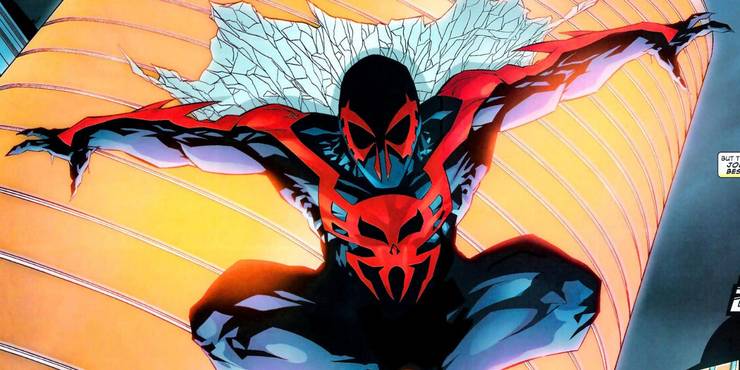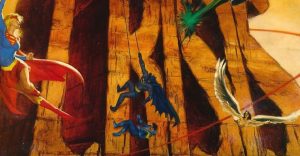The Reason Spider-Man Can Literally STICK To Walls

Spider-Man, as the song goes, “does whatever a spider can” – including stick to walls. Many fans, however, don’t know how that famous power really works. Indeed, given that there are multiple Spider-Men (and women, and pigs) out there in the Spider-Verse, the explanation of Spider-Man’s wall-crawling ability actually depends on which Spider-Man we’re talking about.
Interestingly, Peter Parker – the original Spider-Man – has had multiple explanations for his wall-crawling abilities. According to several Marvel Handbooks, when the radioactive spider bit Peter, it imbued him with the ability to control the electrostatic reaction between his body and any surface on an interatomic level. In other words, Peter’s hands and feet don’t secrete sticky substances, but he can somehow bond himself to almost any surface he wants to.
This weird, pseudo-scientific explanation did come with some limitations. Oil and slick surfaces seemed resistant to Peter’s clinging ability. Peter could also only use his wall-crawling power by touching surfaces with his skin or very thin materials (which explained why Spider-Man wore skintight gloves). Since his power was related to static electricity, a villain who could control electricity – like Electro – was able to negate his ability in some stories.

Bonding with objects on an interatomic level also made Spidey’s clinging power extremely strong. Many comic book stories showed it was virtually impossible for people to pry Spider-Man off a wall or floor when he rooted himself to a surface. Even characters with superhuman strength found they had to break the surface Spider-Man was sticking to in order to move him (and even then, bits of the surface would still cling to Peter’s fingers and toes).
Another interesting aspect of this power was that every part of Peter’s body had this clinging ability, not just his fingers and toes. His wall-crawling power did seem particularly concentrated in his hands and feet, but Spider-Man was sometimes shown clinging to a wall just with his back, or letting objects stick to his arms. (Mary Jane Watson even made some suggestive comments about this aspect of his powers, claiming it led to some interesting speculation). When Peter’s spider-powers were enhanced following the events of The Other, Spider-Man’s clinging ability also received another upgrade and he found he could make his mask stick to his face, preventing people from just yanking it off.
Peter discovered a weird downside to his “attractive” body in one oddball story when Spider-Man’s clinging power went out of control, causing Peter to stick to anything he came into contact with, whether he wanted to or not. This caused him to stagger home with newspapers, trash, and other junk basically glued all over his body. Fortunately, this weird effect wore off (one can only speculate on how hard keeping his secret identity would be if it didn’t!)
Virtually every Spider-based character, from Spider-Woman to Spider-Ham to Peter’s own daughter Spider-Girl had a similar explanation for how they were able to cling to walls. Even Miles Morales seemed to wall crawl in this way in his comics and Into the Spider-Verse. Given how weird Spider-Man’s wall-crawling ability is, it was probably easier for Marvel comic creators to just come up with one explanation and stick with it.

Interestingly, Tom DeFalco and Ron Frenz chose to expand on this power in their Spider-Girl series about Peter’s daughter. While May “Mayday” Parker started out with powers identical to Spider-Man’s, she later discovered she could repel objects she stuck to – apparently by reversing the magnetic pull that allowed her to stick to them in the first place. Later, she temporarily lost her powers in an electrical attack (similar to how Electro negated Spider-Man’s wall-crawling ability) only to regain them later. When she did, however, she found she could magnetize other people or objects to the surfaces she clung to – indicating that the sticking powers of Spider-heroes like herself are related to some kind of magnetic field they generate.
However, not all Spider-Men gained their wall-crawling abilities in this way. When Peter David co-created Spider-Man 2099, he was determined to make his version of the wall-crawler as different from Peter Parker as possible. This included coming up with a different explanation for how his Spider-Man (aka Miguel O’Hara) could climb walls. Miguel’s origin revealed he gained his powers in a genetic experiment gone horribly wrong (similar to David Cronenberg’s remake of The Fly movie). This resulted in some considerable body horror moments when Miguel learned he had grown razor-sharp talons on his fingertips and toes.

The sharp, claw-like appendages allowed Miguel to skitter up and down walls with remarkable speed. However, they came with several downsides. Although they could retract, keeping Miguel from cutting himself, it took a long time for Miguel to learn to consciously flatten his talons. As a result, if he wasn’t careful, he could seriously injure someone just by touching them – which actually happened when he grabbed a falling man by the wrist. While he was trying to save him, his talons cut into the man’s arm, causing him to panic and pull free – falling to his death.
Miguel’s new talons also responded to his emotions, making them a deadly part of his body. When a supervillain attacked him, Miguel lashed out with his hand and accidentally slit the man’s throat. Thankfully, he later gained a better handle on his talons and learned they were incredibly powerful – capable of even slicing through metal. On the other hand, since Spider-Man 2099 really did stick to walls by his finger and toe tips (as opposed to bonding with them like Peter Parker), it was somewhat easier for a strong person to yank him off a wall.

Oddly enough, Miguel’s wall-crawling powers were used to explain Peter Parker’s clinging ability in the Sam Raimi Spider-Man trilogy. In the origin sequence, Tobey Maguire’s Peter Parker sees tiny, almost microscopic hairs with razor-sharp edges emerge from his fingertips, allowing him to scale walls. Thankfully, these tinier talons aren’t as lethal as Miguel O’Hara’s claws, but they do give this Spider-Man a more biological method of wall-crawling than his comic book counterpart.
Notably, it’s still unknown whether electrostatic adhesion or biological talons are responsible for Andrew Garfield or Tom Holland’s versions of Spider-Man in The Amazing Spider-Man films or the MCU movies. Given that neither Garfield nor Holland tried to stick to a wall with just their backs, it’s likely the latter, but in the crazy world of superhero movies, you never know.
About The Author

















